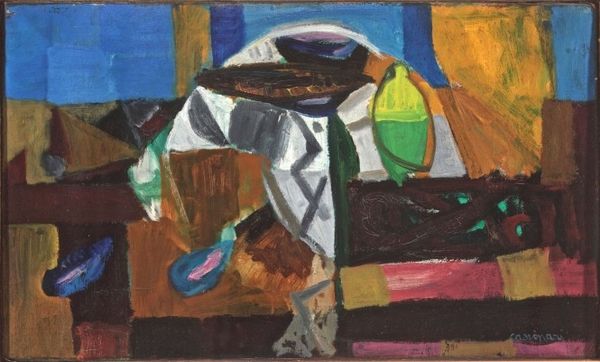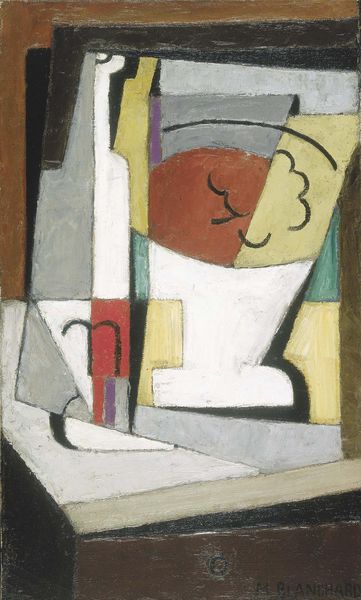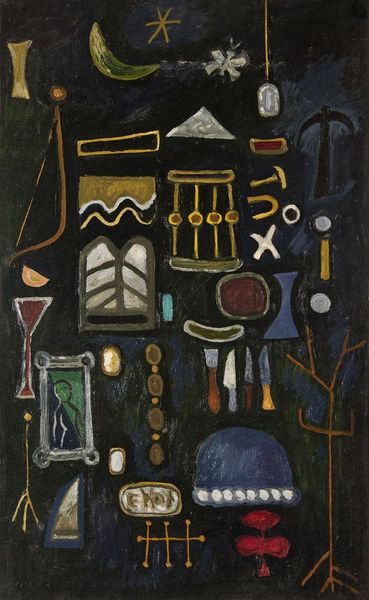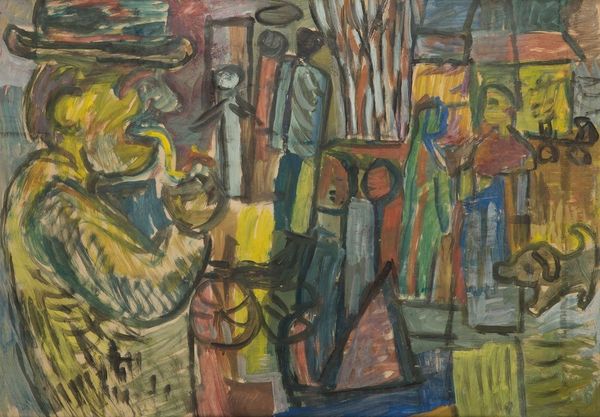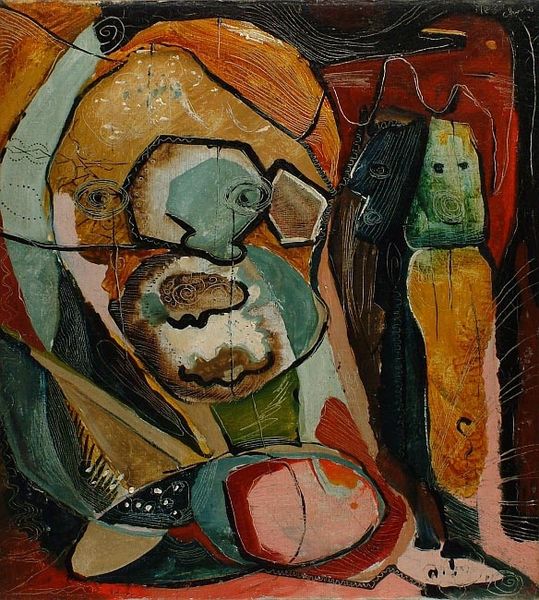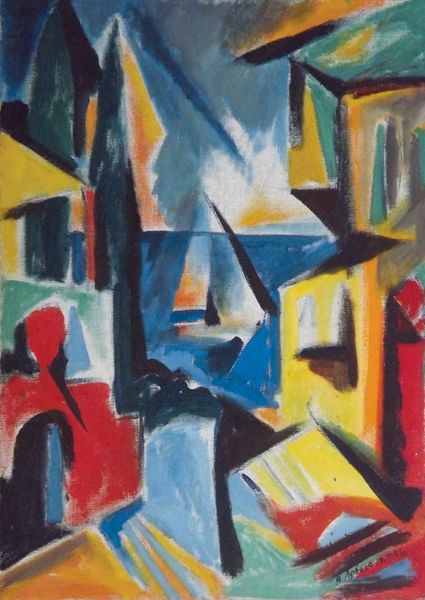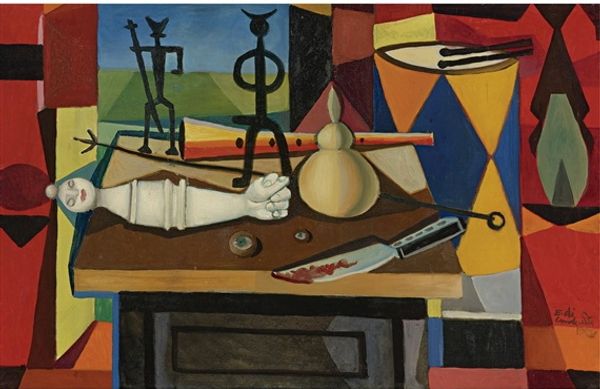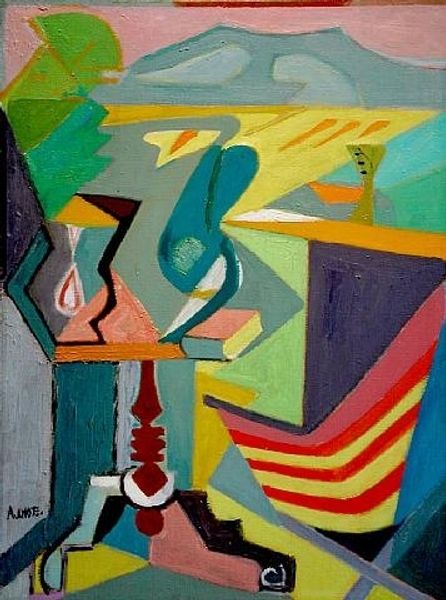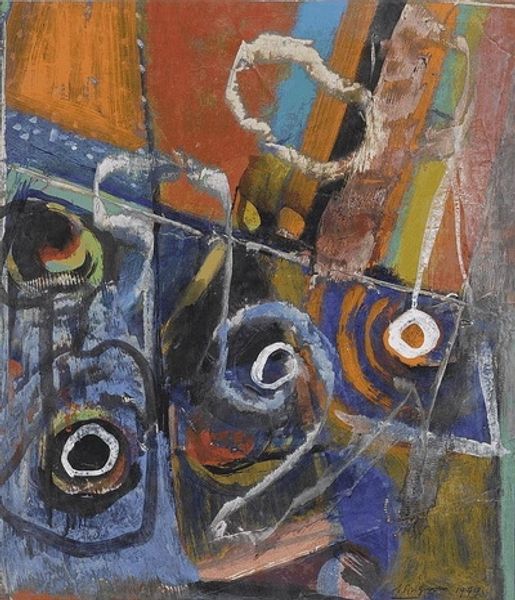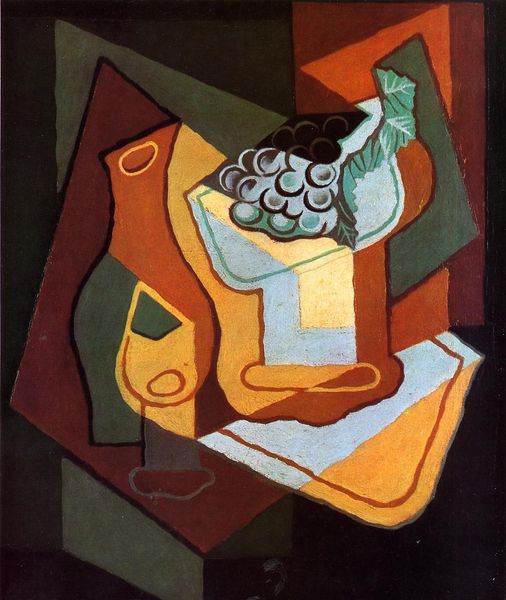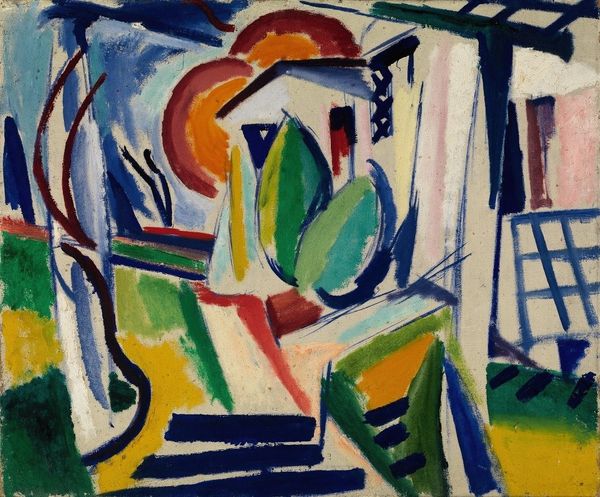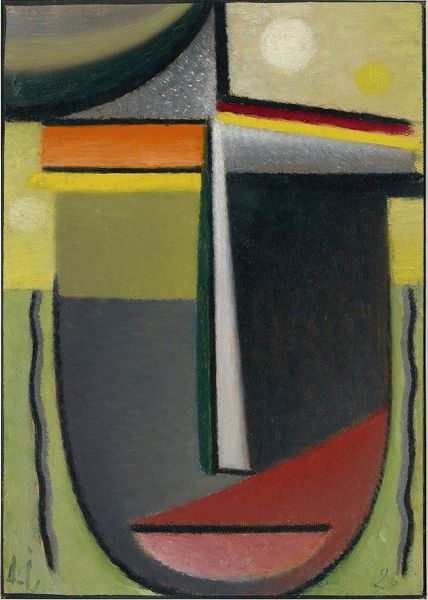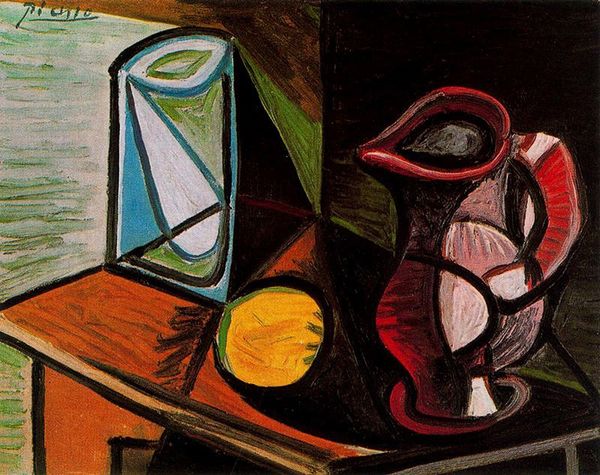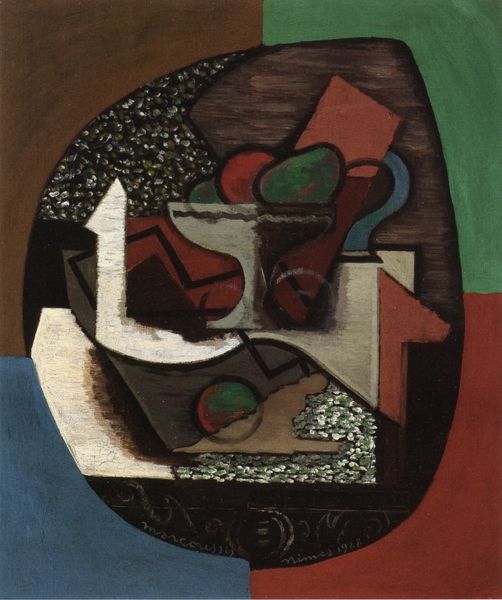
Copyright: André Lhote,Fair Use
Curator: Looking at "Nature Morte au Chinois" by André Lhote from 1930. I’m immediately drawn to its playful yet slightly unsettling aura. It's like peering into a fragmented memory. Editor: Yes, a visual cacophony! The artist throws everything at us - oil paint of course, in a riot of shapes, clashing greens, reds, ochres... you really see the struggle for dominance between line and color. I imagine Lhote must have been driven by both, an ideological struggle reflected in the materiality itself! Curator: Exactly, I feel the pull between intention and something… wilder. Like the materials themselves are resisting neat representation. And that strange Chinese figure looming... Editor: Now there's an interesting juxtaposition – elevating the craftwork from Asian culture against what was considered fine art painting. Were these mass-produced figurines popular objects of fascination and desire? What was the cultural value assigned to this? How did it fit within consumer habits? Curator: I like that; framing it as a power play with culture, not just a still life, eh? And this oriental reference brings me somewhere mysterious and maybe a little ironic. You can tell it’s stylized beyond recognition. It really emphasizes form through geometry. But what do you make of the, shall we say, disjunctive compositions and multiple perspectives? Is he trying to suggest some kind of breakdown of colonial expectations? Editor: Undoubtedly! This work participates in and contributes to shifting the art world’s emphasis on challenging formal illusionism while grappling with consumerism. He doesn't just paint things, but paints how they're made, used, bought, perceived. And from those dark green, heavy brushstrokes… perhaps revealing his complex ambivalence. Curator: See, that reading resonates! Ultimately it brings forth all these uncomfortable ideas bubbling just underneath the surface... So it ends up being almost a history lesson painted in emotion. It shows how even the seemingly still can reflect society's evolution. Editor: It reminds me to inspect not only the art but my position too: How do I consume? What materials do I support through those choices? Looking this closely invites real self-assessment!
Comments
No comments
Be the first to comment and join the conversation on the ultimate creative platform.
